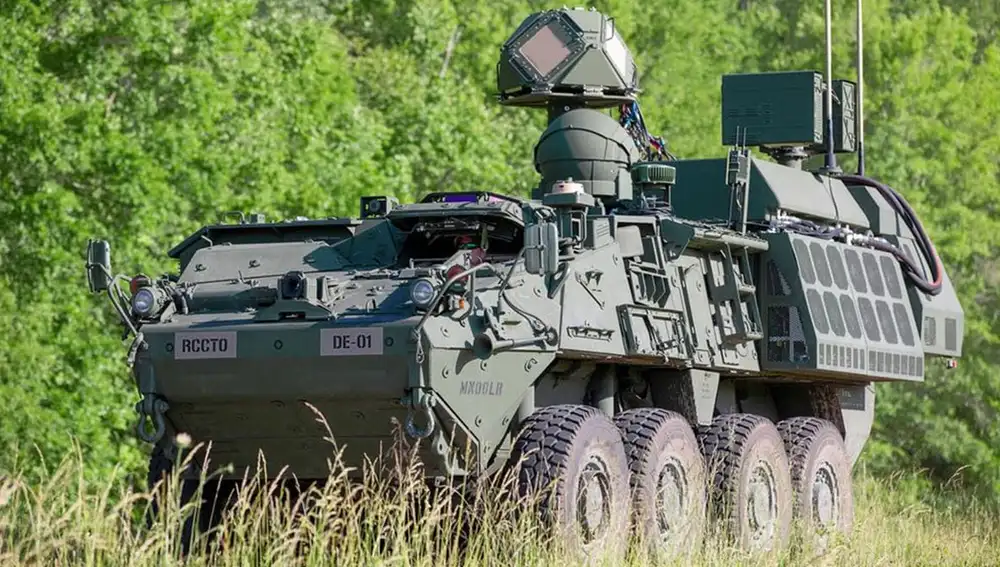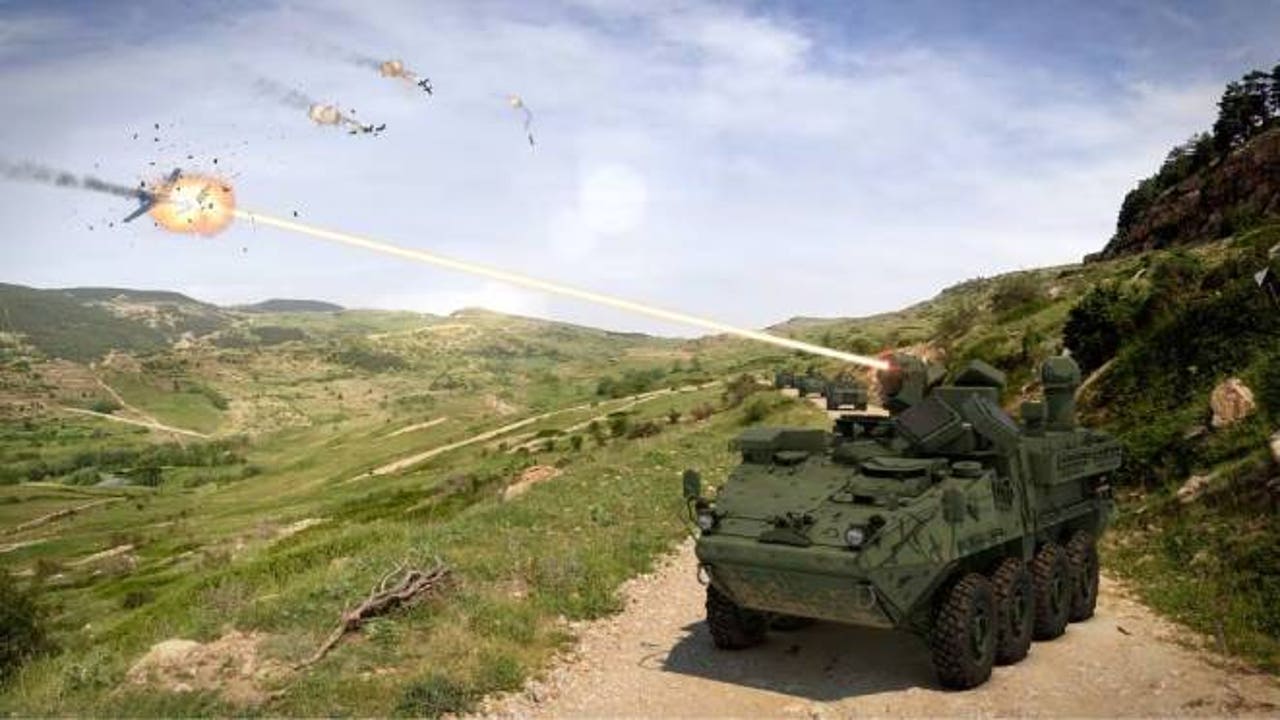He BY M-SHORAD is a new United States air defense system consisting of alaser gun50 kilowatt high energy integrated into an armored vehicle Striker A1 8×8. Initially, this development of Raytheon Intelligence & Space and Kord Technologies It was planned to complete the prototyping and transfer it to the Executive Missile and Space Program by 2023, but a year before the Army's Rapid Capabilities and Critical Technologies Office decided it needed more development time and its transfer was delayed until fiscal year 2025. We have now learned that 3 of the 4 prototypes manufactured are already being tested by the US Army. in real combat environments.
Robert Raschdirector of said office, has indicated to Defense News that the 3 M-SHORAD are deployed in Iraq to test their capacity in “relevant operational environments”, while the fourth prototype will join them after receiving some adjustments. “All four will be in the field supporting our soldiers in the current fight,” Rasch said.
The DE M-SHORAD, acronym for Directed Energy Maneuver-Short Range Air Defense or Directed Energy Maneuver-Short Range Air Defense, had already demonstrated its effectiveness by intercepting drones and mortar projectiles in tests and in live-fire exercises. “We've tested these in labs for decades. Now we're learning some new lessons about what happens when we operationalize themwhen we put them in a really ugly, dirty environment that our soldiers put them in,” Rasch said.
DE M-SHORAD is a technology designed to detect, track, visually identify and shoot down a wide range of aerial threats, but it is not the only one the US Army is considering. Next year, the Army will evaluate two other alternatives of 50 kilowatt laser platforms, one of nLightand another of Lockheed Martin. According to Rasch, these are different designs from the DE M-SHORAD, so it is expected that aspects such as beam quality, affordability and reliability differ.
The Office of Rapid Capabilities and Critical Technologies will dedicate two years to evaluate the options. “We have a few different designs, so we'll take the data from what we've already received, the data we collected from these other two systems, and we'll combine it to prepare senior leaders, probably by the end of 2026, beginning of 2027“Rasch said.
In addition to the laser weapon module, the DE M-SHORAD has a specialized target acquisition radar, laser beam control system and guidance sensor. This defensive system aims to protect infantry from aerial threats such as unmanned aerial systems, rotary wing aircraft, rockets, artillery and mortars.

The DE M-SHORAD provides 360-degree coverage, can protect bases, airports and stadiums, among other military and civil assets, as well as be used on land, sea and air. It can operate as a standalone system or be quickly installed on a variety of platforms, including combat vehicles and Apache helicopters. The manufacturer highlights its scalability, open architecture and reinforced design that adapts to the needs of each mission.
50-kilowatt laser weapons are not the only options being evaluated by the Rapid Capabilities and Critical Technologies Office, also by 10, 20 and 300 kilowatts. The 300 kilowatt laser is designed for the Indirect Fire Protection Capability, a system that will use high-powered kinetic, laser and microwave weapons to destroy threats including rockets, artillery, mortars, drones and cruise missiles. The US Army will receive that laser weapon next year.

